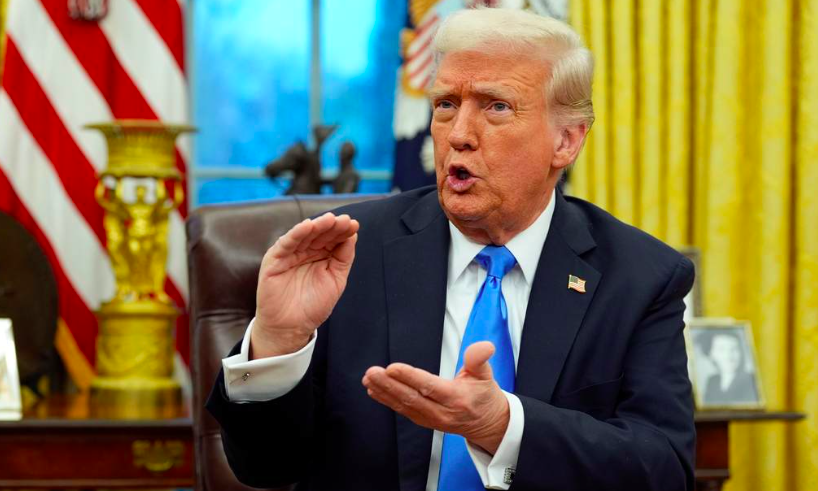The Ninth Circuit Court of Appeals recently made a significant decision regarding the Trump administration’s approach to workforce reductions in federal agencies. The court found that the administration did not have the legal backing to enforce mass firings, as no federal statute supports such authority. This decision came after a San Francisco-based federal appeals court denied the administration’s request to halt a lower court ruling.
In a 2–1 decision, the Ninth Circuit highlighted that President Trump’s executive order went beyond the supervisory powers granted to the president by the Constitution. The ruling emphasized that executive power has its limits and that overstepping those bounds is inconsistent with constitutional principles. Yet, one judge dissented, suggesting a differing interpretation of presidential authority.
This decision is another example of the judiciary acting as a check on executive power, ensuring that all actions align with established laws. The Trump administration’s argument hinged on expanding executive control over federal employment, but the court found this expansion unsupported by existing statutes. The ruling reinforces the idea that even the highest offices must operate within legal frameworks.
Some conservative commentators argue that such court decisions can hinder necessary reform and government efficiency. They assert that reducing bureaucratic bloat is essential for a leaner, more effective government. However, the court’s decision stands as a reminder of the importance of maintaining a balance between reform and the rule of law.
The Ninth Circuit’s ruling may not have been the outcome the administration aimed for, but it sets a precedent for how executive orders related to workforce management are scrutinized. This decision reflects ongoing tensions between different branches of government over the scope of executive power. It also underscores the influential role that the judiciary plays in shaping the boundaries of presidential authority.
The impact of this decision extends beyond immediate workforce issues, touching on broader themes of governance and constitutional interpretation. It highlights the ongoing debate over the limits of executive power, a discussion that has been part of the American political landscape for decades. The ruling serves as a testament to the enduring principles of checks and balances within the U.S. government system.
For advocates of limited government, this decision may be seen as a victory in safeguarding against potential overreach by the executive branch. The court’s focus on constitutional adherence ensures that reforms are pursued through appropriate legislative channels. This approach aligns with the views of those who champion a government that operates within clearly defined legal boundaries.
The dissenting opinion, however, indicates that there is still room for debate on how far presidential powers can extend. This ongoing dialogue is a healthy aspect of a functioning democracy, where different interpretations of the Constitution can lead to robust discussions and, ultimately, a more nuanced understanding of governance. The case underscores the importance of vigilance in preserving constitutional integrity.
While the decision marks a setback for the Trump administration’s plans, it also serves as a reminder of the resilience of the judicial system. The balance of power between branches is a cornerstone of American democracy, ensuring that no single branch becomes too dominant. This ruling is a testament to the enduring nature of these foundational principles.
As the conversation around executive power continues, this case will likely be referenced in future discussions and legal considerations. It provides a clear example of how the courts can influence the direction of executive policies. The decision may encourage future administrations to carefully consider the legal basis for their actions.
The Ninth Circuit’s ruling is more than just a legal decision; it is a reflection of the ongoing struggle to define the extent of presidential power in a complex and evolving political landscape. It reaffirms the judiciary’s role as a guardian of constitutional limits. The case serves as a pivotal moment in the ongoing dialogue about the balance of power in the United States.
This decision may influence how future administrations approach similar issues, potentially leading to more cautious and legally grounded executive actions. The ruling highlights the necessity for clear statutory authority when implementing significant policy changes. It is a reminder of the importance of adhering to legal frameworks in pursuing governmental reforms.
The conversation around this ruling will likely continue as legal experts and political commentators weigh in on its implications. It represents a critical moment in the ongoing discourse about executive authority and the role of the judiciary. The decision underscores the dynamic nature of American governance, where legal interpretations can shape the trajectory of executive actions.
Ultimately, the Ninth Circuit’s decision is a powerful reminder of the principles that guide the American legal system. It reinforces the notion that even the most ambitious executive actions must align with constitutional mandates. This ruling serves as a testament to the enduring importance of the rule of law in maintaining a balanced and fair government.



